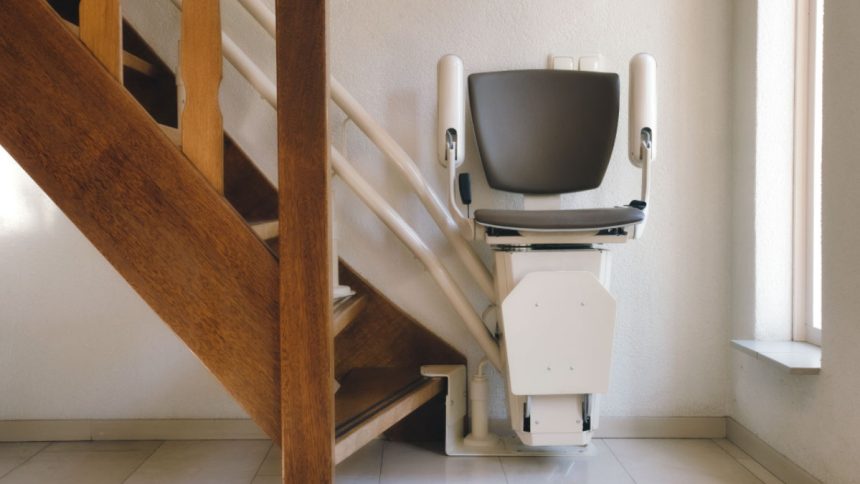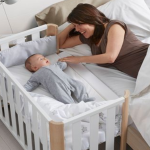Stairlifts offer an essential solution for individuals with limited mobility, allowing them to navigate stairs safely and comfortably. Whether due to ageing, injury, or disability, a stairlift can significantly enhance the quality of life by providing the freedom to move around the home without restriction. However, one of the most common dilemmas faced by those considering a stairlift is whether to buy or rent. This post will guide you through the decision-making process, helping you determine which option is best for your needs.
Understanding Your Needs
Before deciding whether to buy or rent a stairlift, it is crucial to assess your specific requirements. Understanding your needs involves considering factors such as the user’s mobility level, the layout of the home, and the expected duration of need. Check out homecaremedicalequipment.co.uk/buy-or-rent-stairlifts-in-northern-ireland for further info.
If the need for a stairlift is temporary — for example, following surgery or injury — renting might be a more practical solution. However, for those with chronic conditions or age-related mobility issues, a long-term solution like buying could be more cost-effective. Also, consider how often the stairlift will be used; frequent use may justify the investment in purchasing, while occasional use might make renting more appealing.
Pros and Cons of Buying a Stairlift
Pros of Buying a Stairlift:
Long-Term Cost Savings- If a stairlift is likely to be used for several years, buying is usually more economical. The initial investment may seem high, but it eliminates the need for ongoing rental payments, which can add up over time.
Customization Options- When you buy a stairlift, you have the freedom to choose a model that fits your home’s specific layout, your comfort preferences, and any additional features you may need, such as a swivel seat or remote control.
Full Ownership- Purchasing a stairlift means you own the equipment outright. There are no contractual obligations, and you can use or modify it as you wish without any restrictions.
Cons of Buying a Stairlift:
High Upfront Cost- The initial cost of buying a stairlift can be a significant expense, especially for models with advanced features or custom designs for curved staircases.
Maintenance and Repair Responsibilities- As the owner, you are responsible for the upkeep and repair of the stairlift. This can involve additional costs for parts and service, which might be covered by rental agreements.
Pros and Cons of Renting a Stairlift
Pros of Renting a Stairlift
Lower Initial Cost- Renting a stairlift requires a smaller upfront investment, making it a more accessible option for those on a tight budget or with short-term needs.
Flexibility for Short-Term Needs- Renting is ideal for temporary situations, such as recovery from surgery, where the need for a stairlift is expected to last only a few months.
Maintenance and Repairs Covered- Most rental agreements include maintenance and repairs, providing peace of mind without additional expenses.
Cons of Renting a Stairlift:
Higher Long-Term Costs- Renting can become more expensive over time, especially if the stairlift is needed for several years. The monthly payments can add up to more than the cost of buying.
Limited Customization Options- Rental stairlifts are usually standard models with fewer customization options. If you have specific needs or a uniquely shaped staircase, the available options may be limited.
Cost Comparison: Buy vs. Rent
When making a decision, it’s essential to consider the costs involved in both buying and renting a stairlift.
Buying Costs:
Initial Purchase Price
The cost of a new stairlift can range from €2,000 to €15,000, depending on the model, features, and whether it is designed for straight or curved stairs.
Installation Fees
Some companies include installation in the purchase price, while others charge separately, which can add a few hundred Euros to the cost.
Maintenance Costs
Regular maintenance may be necessary, and the cost can vary depending on the warranty and service agreement.
Renting Costs:
Monthly Rental Fees
These can range from €100 to €300 per month, depending on the model and features.
Initial Setup Fees
Many rental agreements include an initial setup or installation fee, which can be around €500 to €1,000.
Hidden Costs
Some rental contracts may have additional costs, such as removal fees or charges for repairs not covered by the rental agreement.
Factors to Consider Before Deciding
Duration of Need
If you expect to need the stairlift for a long time, purchasing is likely the better option. However, for short-term needs, renting can save money and provide flexibility.
Budget Constraints
Consider your financial situation, including the ability to handle a large upfront cost versus manageable monthly payments.
Availability of Options
Check the availability of both rental and purchase options in your area, as well as the range of models offered. Not all companies provide both services, and some may have limited stock.
Home Layout and Space
The design and layout of your staircase may impact your decision. Curved or narrow staircases may require custom stairlifts, which are often better suited for purchase than rental. See if there are any stair panelling that may be in the way for installation and mobility.
Future Plans
If you plan to move homes or make significant changes to your living situation in the near future, renting may offer more flexibility.
Choosing between buying or renting a stairlift depends on various factors, including the duration of need, budget, home layout, and future plans. Buying offers long-term savings, customization, and ownership, while renting provides flexibility and lower upfront costs. Carefully consider your individual needs, consult with mobility experts, and compare options to make the best decision for your circumstances. Ultimately, the right choice will ensure that you or your loved ones can enjoy safe and independent movement around the home.
Lynn Martelli is an editor at Readability. She received her MFA in Creative Writing from Antioch University and has worked as an editor for over 10 years. Lynn has edited a wide variety of books, including fiction, non-fiction, memoirs, and more. In her free time, Lynn enjoys reading, writing, and spending time with her family and friends.















